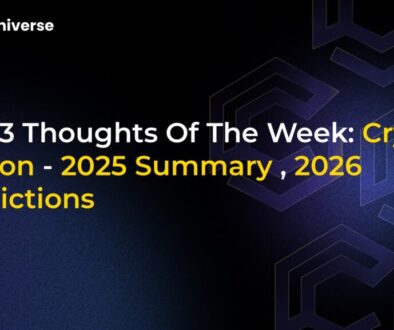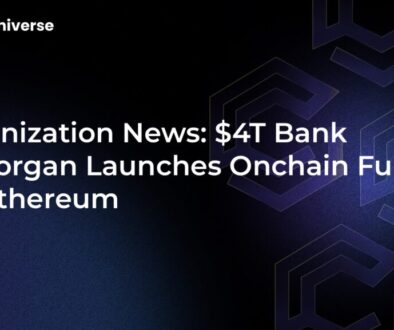Is 2025 cryptocurrency revolution’s tipping point: Fringe to mainstream?

The Great Convergence: How 2025 Became Crypto’s Mainstream Moment
For years, cryptocurrency has existed on the financial world’s periphery—a fascinating, volatile, and often misunderstood technological experiment. But 2025 is proving to be the year the script flips. The question is no longer *if* crypto will go mainstream, but *how* fast it’s happening. With a global market cap soaring towards $4 trillion, digital assets are no longer a niche interest. They are commanding the attention of the world’s most powerful financial institutions, corporations, and governments. This isn’t just another bull run; it’s a fundamental restructuring of finance. So, is 2025 the cryptocurrency revolution’s tipping point, the definitive shift from
The Smart Money Arrives: Institutional Adoption Takes Center Stage
The most undeniable proof of crypto’s mainstream acceptance is the movement of institutional capital. These are not speculative day traders but the world’s most sophisticated, long-term investors.
- University Endowments: Harvard Management Company, which oversees the largest university endowment in the U.S. at $53.2 billion, made a landmark move by allocating $116 million to BlackRock’s iShares Bitcoin Trust (IBIT). This isn’t a gamble; it’s a calculated decision recognizing Bitcoin as a legitimate portfolio diversifier. Harvard isn’t alone. Endowments at Yale, Brown, Stanford, and MIT have also integrated crypto into their strategies, signaling a profound shift in institutional risk assessment.
- Wall Street Builds the Future: Despite past skepticism, financial giants are now building the infrastructure for the crypto economy. JPMorgan Chase, through its JPM Coin and blockchain settlement systems, is a key player. Its research division now actively analyzes the crypto market, even predicting Bitcoin will outperform gold in the latter half of 2025. Firms like Charles Schwab are poised to serve institutional demand, building expertise while advocating for the clear rules needed for full-scale participation.
The Numbers Don’t Lie: A Story of Global Scale
The data from 2025 paints a clear picture of an asset class that has achieved critical mass.
- Global Ownership: Over 560 million people, or 6.8% of the global population, now own cryptocurrency.
- U.S. Confidence: Ownership in the United States has stabilized at a strong 28% of adults, showing renewed and sustained confidence.
- Bitcoin’s Strength: As of August 2025, Bitcoin has demonstrated remarkable resilience, trading consistently above $115,000. With a market cap of approximately $2.4 trillion and daily trading volumes exceeding $60 billion, its price is being driven by robust institutional demand, not just retail speculation.
A New Era of Regulation: The Missing Piece Clicks Into Place
For years, regulatory uncertainty was the biggest barrier to institutional investment. In 2025, that barrier has been shattered by a series of transformative policy initiatives in the United States.
The 401(k) Game-Changer
Perhaps the single most impactful development has been the August 7, 2025, executive order easing access for 401(k) retirement plans to invest in alternative assets, including cryptocurrency. This move could potentially unlock the largest pool of capital in American savings—roughly $12.5 trillion—for crypto investment. The significance cannot be overstated; this policy alone could dwarf all previous capital inflows into the market.
Landmark Legislation Provides Clarity
Beyond retirement accounts, a flurry of pro-crypto legislation has created the guardrails institutions have been waiting for:
- The GENIUS Act: Signed on July 18, 2025, this is the first major federal law for crypto in the U.S. It establishes clear rules and consumer protections for stablecoin issuers, legitimizing a core part of the digital asset ecosystem.
- The CLARITY Act of 2025: This bipartisan effort gives the Commodity Futures Trading Commission (CFTC) exclusive jurisdiction over digital commodity spot markets, ending the regulatory ambiguity that has long hindered institutional players.
- Strategic Government Vision: The U.S. government is now actively considering a Strategic Bitcoin Reserve and a U.S. Digital Asset Stockpile. The mere discussion of holding digital assets as a national strategic reserve provides the ultimate institutional endorsement.
From Corporate Experiment to Treasury Staple
The trend of companies adding Bitcoin to their balance sheets, once pioneered by MicroStrategy, has gone mainstream. In 2025, it’s no longer a radical experiment but a core business strategy for forward-thinking firms.
Around 160 companies now hold over $103 billion in Bitcoin. MicroStrategy continues to lead the charge, holding a staggering 601,550 BTC valued at over $73 billion. Tesla also maintains its significant position with over 11,500 BTC. This trend is only accelerating, with Bernstein analysts projecting that corporate treasuries will add another $330 billion in Bitcoin by 2029 as a hedge against inflation and currency debasement.
Why This Time Is Different: Beyond the Bubble
It’s natural to ask if this is just another speculative bubble. However, the 2025 bull market is fundamentally different from those of 2017 and 2021.
- 2017: Driven by retail FOMO and unregulated Initial Coin Offering (ICO) speculation.
- 2021: Fueled by pandemic-era stimulus and early, experimental corporate adoption.
- 2025: Built on a bedrock of institutional infrastructure, clear regulatory frameworks, and systematic capital allocation from the world’s largest financial players.
The market’s maturity is also reflected in Bitcoin’s decreasing volatility. As institutional capital has deepened the market, the wild price swings of the past have given way to more stable, sustainable growth patterns that fall within institutional risk tolerance.
Conclusion: The Tipping Point is Here
The cryptocurrency revolution’s tipping point from
The infrastructure is built, the rules are clear, and the world’s biggest investors are on board. The distinction between “crypto” and “finance” is blurring as blockchain technology becomes embedded in our financial system. The fringe has become the foundation, and the technological experiment has become a global financial reality.


